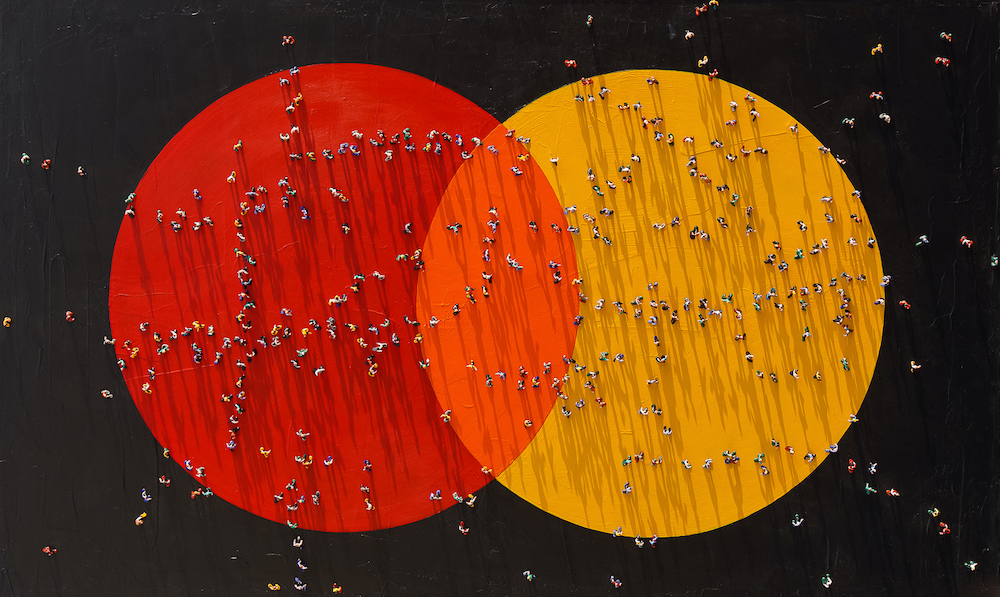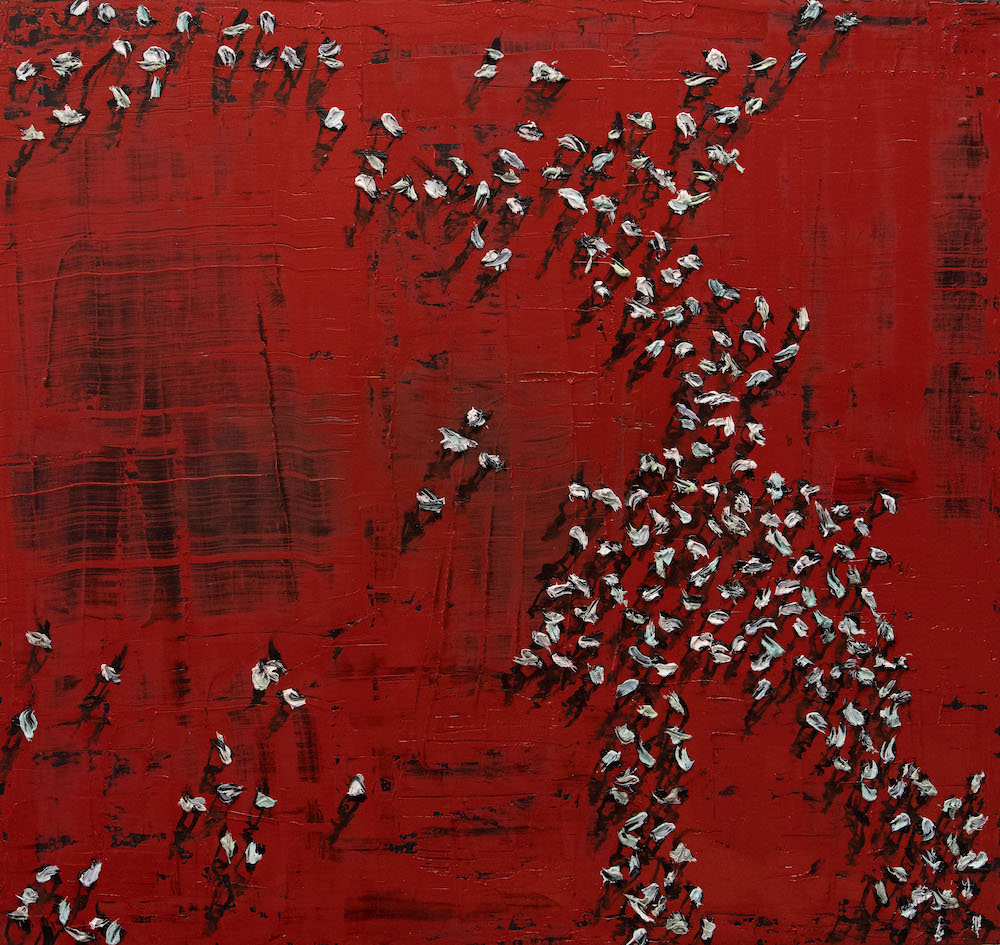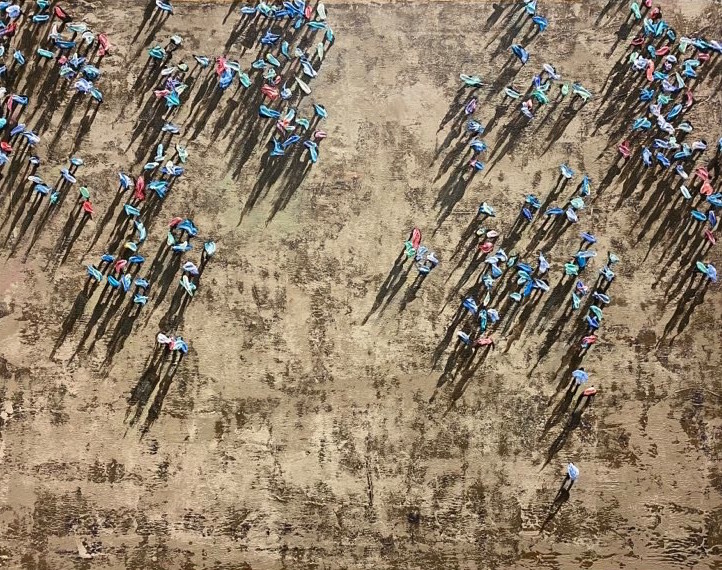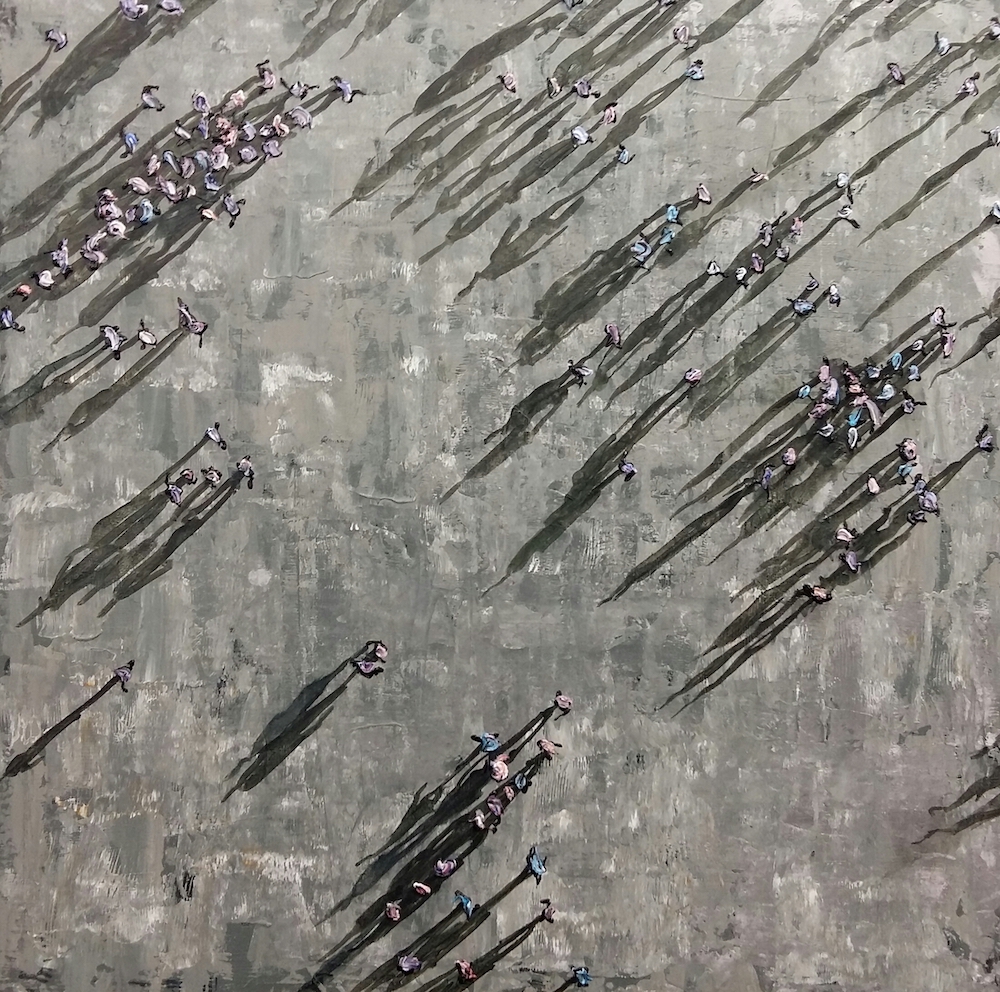
Feel free to add tags, names, dates or anything you are looking for


The most recent artwork by Merab Surviladze is blatantly ambiguous, and a reaction to social motifs that were heightened by the Covid-19 pandemic. “MasterCard” is a huge canvas that resembles the iconography of the company’s well-known logo, and appears to be a massive bank card. Small figures of people move and walk upon it as if they were in the streets of a city that had been emptied by a contagious disease. Merab Surviladze loves producing contrasts in scales, perspectives, textures and volumes.
This time the contrast is more ironic than in his other earlier works because the image of the well-known brand, whose laconic and colorful logo should radiate only positivity – giving the impression that life is enjoyable and creating a sense of stability – here appears "suspicious" and resembles a field of chaotic movements.

Merab Surviladze. MasterCard. 90x150. Acrylic on canvas. 2021
Merab Surviladze claims that he hasn’t spoken about the global events taking place, and doesn't feel the need to verbally communicate his thoughts; instead, he reacts with images, and these images are exactly what he perceives. How does the spectator perceive them? The shadow metaphor and its artistic-philosophical extension serve as the intellectual foundation for Merab Surviladze’s unique take on abstract painting. The relief mini-sculptures of differing scales and sizes “emerge" from the canvas: in some places they look like groups of small humans, in other areas they resemble cosmic bodies thrown out by a natural wave. Chaos and natural forces are the main motifs, which are manifested in different formats, tones and intensities. This evocative artwork by Merab Surviladze is similar to a riddle that, when encountered in person, leaves a lasting impression on the observer due both to its unexpected aesthetics and to the method in which it has been technically executed.
At first glance, similar canvases where we seem to find different variations of the same theme also appear to have narrative aspects that conceal various storylines. Anonymous, similar silhouettes are only perceived as a homogeneous mass at a distance. At close range, each of the similar, anonymous silhouettes is perceived as an individual existence; at a distance, the shadow dimension makes them resemble one another.
Merab Surviladze appears to be posing a question concerning the shadow phenomenon and its potential connotations in his works: namely, what happens to the body when it transforms into a shadow. When a colored object transforms into a black or gray silhouette, is it simply a process of color transition, or are the shadow "demons" thrown out by internal processes? Is the shadow a part of the body that cannot exist separately? Additionally, his paintings' primary evocation is shots of particles being thrown around by natural currents, which bear an artistic resemblance to artworks depicting cosmic systems.

Merab Surviladze. Shadows (Series). 80x85. Acrylic on canvas. 2019

Merab Surviladze. Shadows (Series). 80x85. Acrylic on canvas. 2019
Those who are familiar with Merab's art are also aware of a significant transformation that it underwent. Initially, he produced naive pieces that were grotesque, and emotional representations of national motifs. He himself puts the cause of this down to attitudes among the initial wave of emigration. He has lived in Brussels since the 1990s, and during that period “national cultural markers” have also entered his works, but without any ideological pathos.
Merab Surviladze
“I depicted these grotesque men in chokhas (Caucasian woolen coats), I was interested in heraldry, and romance about the past. During the first stage of my emigration, this was probably understandable... Figurative works, the so-called Naive, always drew attention in the West, maybe due to the fact that they were foreign, exotic, and their attraction lay therein. Here, "Shadows" is already a different stage – closer to the processes that are happening right now in painting, where there are no longer any national or other borders” said Merab Surviladze in an interview (Indigo, #34. 2018).

Merab Surviladze. Shadows (Series). 105x105. Acrylic on canvas. 2018
The changes were brought about by a random story - in 2011, Merab wound up among Jan Fabre's technical team, getting ready for a big show in Venice. The artistic scale of the massive multimedia installation impressed him; the technical nuances of such work proved to be a discovery for him, and this experience totally transformed his life.

Merab Surviladze. Piéton. 80x100. Acrylic on canvas. 2021
Nowadays, Merab Surviladze is a shadow and surface artist, whose work immediately identifies the author. The silhouette-volumes that emerged from his textured canvases gradually evolved into miniature sculptures, which gave rise to new themes – such as uniformed versions of anonymous characters, which are as ambiguous and enigmatic as all of the works created under the theme of shadows and surfaces. A desire to emerge from the surface determines the character of these "three-dimensional" canvases, where the figures created with paint as jewels try more and more to become independent sculptures. Merab Surviladze is likely to conduct new experiments – this time using the medium of sculpture.